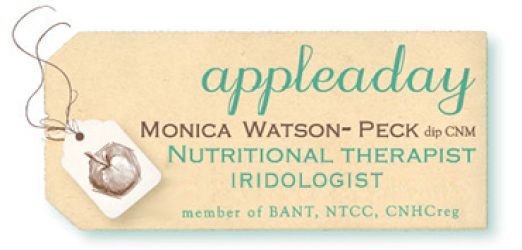Can a baby be allergic to her mother’s breast milk? This question came up in an online practitioner discussion recently, and seemed an apt starting point for some health chat about intolerances in babies and toddlers.
Regarding the above question, it’s more likely to be an allergy to an antigen in the mother’s diet than to the breast milk (a case in point why nursing mothers should be careful with their own diets, especially if allergies and intolerances run in families).
However, it’s often difficult to determine the specific antigen in question.
The easiest and most affordable way is to try an elimination diet. Removing a food that’s in your (or your toddler’s) daily diet and observing if any symptoms improve. Then moving onto another daily food after that, and seeing if you get results.
All very straightforward. It requires keeping a food diary and being vigilant, especially if you’re excluding something like gluten, which is in so many of today’s meals – from cereals to pasta to most grains. In fact, it’s as difficult as trying to eliminate sugar, which is added to endless processed foods, although often under an alias such as glucose, fructose, corn syrup, maple syrup, brown rice, barley malt…and another 50 odd names. All of these do the same thing to your health, namely increase inflammation, add calories and no nutrients, plus worsen any chronic condition.
As regards allergies or intolerances, eating less sugars can only improve things!
You can take the elimination diet a step further and do a ‘challenge’ test. This is to be absolutely certain if there is an intolerance going on.
Exclude the food for 4 or 5 days, then ‘challenge’ your (or your child’s) system by reintroducing that food in a big way over a day (eg. In the case of gluten you could eat cereal for breakfast, sandwiches for lunch and pasta for dinner). Watch for symptoms and then wait 3 days before trying the exclusion of another food (as there may be an overlap in symptoms due to the previous challenged food).
So what foods would you start with?
The following are the most common allergens: gluten, dairy, eggs, nuts, shellfish, citrus and soy. However, we are all individuals and you or your child may be reacting to apples or stone fruit or fish or anything….
So look at food with a critical eye. Exclude one at a time esp those being eaten on a regular basis, and see if symptoms reduce. Often the very foods which are problematic are the ones you don’t want to let go.
Excluding these short term, and following an anti inflammatory diet, will give your gastro intestinal tract a rest & time to heal, especially if you also supplement with immune- and gut-supportive nutrients.
Whether you then want to completely avoid a culprit food long term is another question, a hotly debated one, and very dependent upon your – and your child’s – individual reactivity. It will also be dependent on the food in question.
If there is a large number of foods to which your youngster seems to be reacting, then seek nutritional advice. You should not be restricting too many foods for any length of time otherwise your toddler will be deprived of nutrients that are vital to growth and repair.
Functional tests are very useful as they can reveal possible underlying causes such as a gut infection or parasites or insufficient commensal (‘friendly’) bacteria, or something called permeable intestine (leaky gut), which is often in play when there are multiple allergies. All these can cause gut discomfort, pain, loose bowels, rashes, headaches…..
There are low allergenic diets which you can also try out with your toddler, such as the GAPS diet – healing the gut with a short term restrictive diet (short term being a key word). Here is a link about it:
http://www.gapsdiet.com/gaps-introduction-diet.html
In addition, there are some really effective nutrients and supplements which focus on healing the gut microbiome and mucosal lining as well as giving that overall immune function support a hypersensitive system can benefit from. The choice of what to use will be determined by the root cause, symptoms and individual health status.
It’s rarely going to be a quick fix, so consider other factors apart from nutrition. Your environment and the home in which your toddler is living. The chemicals in your cleaning products & washing powders or perfumed sprays and candles or treatments on the furnishings…or consider if mould is a problem in the house, or dust mites, or if animal dander may be exacerbating symptoms. And what about the toys your baby or toddler is playing with?
So there’s a lot you can do: the elimination or challenge diet, reducing sugars and simple carb foods (those high glycaemic, low nutrient ‘white’ flour foods), increasing fresh foods, reducing processed foods, plus removing chemicals from your environment.
And if you’d like more specific advice or information on functional testing you can email or call me.

